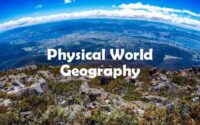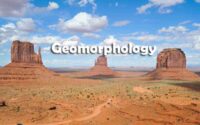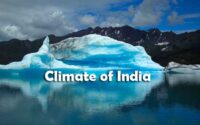WBCS Geography Questions and Answers
WBCS Geography Questions paper pdf for examination is given below. West Bengal Civil Service geography question papers direct download links are given in this section. Hence, download the WBCS Geography Previous Paper pdf below.

West Bengal Civil Service Geography Previous Papers Pdf help the applicants in their preparation. WBCS Geography previous papers are available here to download. This is the good news for the candidates who are preparing for West Bengal Civil Service.
Aspirants can download West Bengal Civil Service Model Papers on Geography pdf through online mode. Applicants who are preparing for West Bengal Civil Service written exam can download WBCS Geography Sample questions from our website for free.
Questions and Answers on Geography for WBCS
1. Thermal lows in the continental areas are due to
(A) Intense daytime heating
(B) Intense daytime cooling
(C) Intense night time heating
(D) Intense night time cooling
2. Persian Gulf is an example for
(A) Tropical depressions
(B) Thermal lows
(C) Lee depressions
(D) Polar air-depressions
3. Lee depressions are seen in
(A) Persian Gulf
(B) Alps
(C) Northwestern Europe
(D) North Atlantic
4. The word monsoon is derived from the Arabic word
(A) Mausim
(B) Mausem
(C) Mausuam
(D) Mauseum
5. Who propounded the thermal concept of the origin of Asiatic monsoon for the first time ?
(A) Trewartha
(B) Halley
(C) Peirre Pedelaborde
(D) Niewolt
6. The period of retreating south-west monsoon in India is
(A) September to early October
(B) July to early September
(C) August to early September
(D) July to early August
7. Pseudo monsoons are seen in
(A) Northern Australia
(B) Southern United States of America
(C) Sri Lanka
(D) Bangladesh
8. According to Koppen’s climatic classification the group of plants of the Arctic region are called
(A) Megatherms
(B) Microtherms
(C) Mesotherms
(D) Hekistotherms
9. Thornthwaite’s 1948 classification is based on
(A) Temperature
(B) Potential evaporation
(C) Potential evapotranspiration
(D) Actual Evapotranspiration
10. According to Koppen’s climatic classification the Megatherms require
(A) High temperature and Abundant supply of moisture
(B) Low temperature and Abundant supply of moisture
(C) High temperature and less supply of moisture
(D) Low temperature and less supply of moisture
11. The upper surface of the ground water in an unconfined aquifer is known as
(A) Ground water table
(B) Ground surface
(C) Aquifer
(D) Aquiclude
12. The process of downward entry of water into the ground is called
(A) Interception
(B) Infiltration
(C) Interflow
(D) Capillary fringe
13. In the water balance equation Q = P-E ± S , “S” indicates
(A) Evaporation
(B) Change in storage
(C) Runoff
(D) Water surface
14. Abyssal plain is found between
(A) Continental slope and continental rise
(B) Continental shelf and continental slope
(C) Below continental rise
(D) Above Continental rise
15. Abyssal plains occupy an area of the oceans of about
(A) 80%
(B) 40%
(C) 80% – 85%
(D) 90%
16. The main mid-oceanic ridge in the southern part of Indian Peninsula is known as
(A) Laccadive -Chagos ridge
(B) Andaman- Chagos ridge
(C) Maldive- Chagos ridge
(D) Nicobar-Chagos ridge
17. The tides caused when the Sun, Moon, and the Earth are in same line are called
(A) Neap tides
(B) Spring tides
(C) Diurnal tides
(D) Daily tides
18. The general movement of ocean currents in the northern hemisphere is
(A) Clockwise
(B) Anticlockwise
(C) Sometimes north direction
(D) No prominent direction
19. The average salinity of the sea water is
(A) 35 o/00
(B) 25 o/00
(C) 20 o/00
(D) 28 o/00
20. The average annual temperature of the ocean water is about
(A) 10oF
(B) 18oF
(C) 15oF
(D) 6oF
| RRB NTPC | AFCAT |
| TNPSC | SSC CHSL |
| MPSC | SSC CGL |
| UPSC | WBCS |
| CDS | BPSC |
21. The scale of national high altitude aerial photographs is
(A) 1 :40,000
(B) 1:80,000
(C) 1:50,000
(D) 1:1,20,000
22. Atmospheric blinds are also known as
(A) Absorption bands
(B) Atmospheric windows
(C) Transmission bands
(D) Diversions
23. Spatial resolution is also known as
(A) Brightness value
(B) Ground element
(C) Spectral change
(D) Grey level
24. Geostationary satellites are also known as
(A) Sun-synchronous
(B) Geo-synchronous
(C) GPS satellites
(D) Natural resource satellites
25. The term ‘training sites’ is associated with which image classification ?
(A) Supervised
(B) Unsupervised
(C) Both supervised and Unsupervised
(D) None of these
26. The beginning point of an arc in GIS is known as
(A) FNODE
(B) TNODE
(C) VERTEX
(D) LABEL
27. Scanner resolution is expressed in
(A) DPI
(B) DPF
(C) DIP
(D) DPM
28. The basic unit of an image is
(A) Pixel
(B) Point
(C) Line
(D) Polygon
29. Vectorization is also known as
(A) Digitization
(B) Scanning
(C) Rasterization
(D) Imaging
30. Scanner uses the following device
(A) CCD
(B) Imaging tube
(C) Toner
(D) Vidicon
31. On a 1:1000 scale map 1 centimetre represents how many kilometres on the ground?
(A) 0.001
(B) 0.01
(C) 0.1
(D) 1
32. Which scale provides more accuracy?
(A) Plain scale
(B) Diagonal scale
(C) Vernier scale
(D) Pace scale
33. The closely spaced contours indicate
(A) Gentle slope
(B) Steep slope
(C) Flat
(D) Nearly levelled
34. Which profile gives panoramic effect?
(A) Composite profile
(B) Projected profile
(C) Serial profile
(D) Superimposed profile
35. The other name for simple cylindrical projection is
(A) Cylindrical equi-distance projection
(B) Clylindrical equal area projection
(C) Natural cylindrical projection
(D) Cylindrical orthomorphic projection
36. The instrument used for reduction and enlargement of plans, charts and maps is
(A) Planimeter
(B) Pantograph
(C) Opisometer
(D) Altimeter
37. Which maps are best to show field boundaries with ownership details
(A) Cadastral maps
(B) Topographical maps
(C) Soil maps
(D) Land utilization maps
38. Which method is ideal to represent statewise population data ?
(A) Dot
(B) Choropleth
(C) Isopleth
(D) Spehere
39. Population density can be shown accurately by
(A) Choropleth maps
(B) Isopleth maps
(C) Dot maps
(D) Flow diagram
40. The area of a single crop in different states can be shown by
(A) Choropleth
(B) Proportional circle
(C) Bargraph
(D) Pie diagram
41. Which of the following is a purposive sampling method?
(A) Snow ball
(B) Random
(C) Stratified
(D) Systematic
42. ‘The number eight is half of sixteen’ is an example for
(A) Nominal scale
(B) Ratio scale
(C) Ordinal scale
(D) Interval scale
43. Frequency distributions are mostly used for the analysis of
(A) Qualitative data
(B) Quantitative data
(C) Both qualitative and quantitative data
(D) None of these
44. Frequency distribution can be represented by
(A) Choropleth
(B) Isopleth
(C) Histogram
(D) Sphere diagram
45. Which measure of central tendency indicate size of a variable?
(A) Arithmetic mean
(B) Geometric mean
(C) Mode
(D) Median
46. Which of the following is a measures of central tendency of mathematical average ?
(A) Geometric mean
(B) Median
(C) Mode
(D) Range
47. Standard deviation is also known as
(A) Standard co-efficient of deviation
(B) Mean deviation
(C) Average deviation
(D) Root mean square deviation
48. Which statistical technique is useful for comparing the degree of variation from one data series to another
(A) Co-efficient of variation
(B) Standard deviation
(C) Mean deviation
(D) Co-efficient of Quartile deviation
49. Which of the following is a probability sampling method?
(A) Purposive
(B) Systematic
(C) Snow ball
(D) Convenience
50. In which sampling method every member of the population being studied has an equal chance of being studied?
(A) Random
(B) Stratified
(C) Stratified
(D) Purposive



